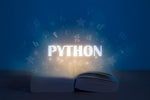

Serdar Yegulalp
Senior Writer
Serdar Yegulalp is a senior writer at InfoWorld, covering software development and operations tools, machine learning, containerization, and reviews of products in those categories. Before joining InfoWorld, Serdar wrote for the original Windows Magazine, InformationWeek, the briefly resurrected Byte, and a slew of other publications. When he's not covering IT, he's writing SF and fantasy published under his own personal imprint, Infinimata Press.


What is Cython? Python at the speed of C
A superset of Python that compiles to C, Cython combines the ease of Python with the speed of native code. Here's a quick guide to making the most of Cython in your Python programs.

Why you should use Docker and containers
Learn how lightweight, portable, self-contained Docker containers improve software development, application deployment, and business agility.

3 tiny Kubernetes distributions for compact container management
Small is beautiful, and it could be just the antidote you need for Kubernetes' sprawl. Here are three popular, miniaturized Kubernetes distros for managing containers at scale.

Rust tutorial: Get started with the Rust language
Here's how to get your feet wet with Rust, from using Rust’s toolchain to creating projects, working with third-party code, managing libraries, and more.

Happy Hacking Keyboard review: Tiny typing comfort at a cost
Compact and with great key action, but expensive, the HHKB wants to be your one keyboard for all devices.

Book review: 'Python Tools for Scientists'
Python has a wealth of scientific computing tools, so how do you decide which ones are right for you? This book cuts through the noise to help you deliver results.

The best new features and fixes in Python 3.11
A faster interpreter, more intelligible errors, more powerful type hints, and a slew of other speedups and tweaks are now ready to try out.

The best open source software of 2022
InfoWorld’s 2022 Bossie Awards celebrate the most important and innovative application development, devops, data analytics, and machine learning tools of the year.

6 Kubernetes distributions leading the container revolution
Kubernetes and containers are changing how applications are built, deployed, and managed. These distros are leading the charge.

Why the C programming language still rules
The C language has been a programming staple for decades. Here’s how it stacks up against C++, Java, C#, Go, Rust, Python, and the newest kid on the block—Carbon.

Intro to Nuitka: A better way to compile and distribute Python
You can use Nuitka to compile Python programs to standalone executables, then redistribute them without the Python runtime.

Python garbage collection and the gc module
How does Python deal with memory management? Learn the ins and outs of Python's garbage collection system and how to avoid its pitfalls.

Use Cython to accelerate array iteration in NumPy
NumPy is known for being fast, but there's always room for improvement. Learn how to use Cython to iterate over NumPy arrays at the speed of C.

7 YAML gotchas to avoid—and how to avoid them
YAML is a human-readable configuration file format that is flexible and easy to understand, but fraught with unexpected pitfalls. Here’s how to dodge its most precarious issues.

What’s the Go programming language really good for?
Understand the strengths, weaknesses, use cases, and future directions of Google’s hit programming language.

What is TOML? An easier way to configure Python apps and more
TOML makes writing configuration files simple, straightforward, and more human-readable than many other formats, including JSON.

How to use Python dictionaries
Learn how Python's dictionary data structure works as a powerful and versatile way to store and retrieve objects and data in your applications.

ASGI explained: The future of Python web development
Learn how the new asynchronous standard for Python web applications makes apps faster, more flexible, and more future-proof.

How to use Rust with Python, and Python with Rust
You can merge Python's convenience with Rust's speed, thanks to libraries in both languages. Get started with the PyO3 project and cpython crate.